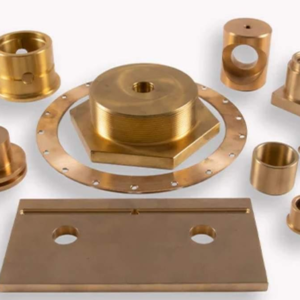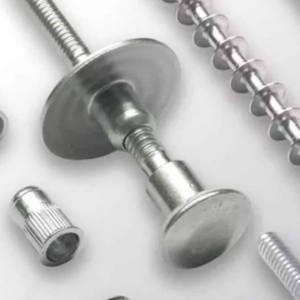As indústrias de usinagem aplicam diferentes processos de acabamento em peças usinadas. Um deles é conhecido como serrilhado, que é usado para trazer acabamentos texturizados. As linhas de contorno geradas são únicas, pois formam cristas e valas nas peças criadas.
Este artigo também define o Sungreding, Tipos de serrilhado, e imperfeições usuais. Além disso, técnicas de serréis, ferramentas necessárias, e diretrizes úteis para o gole ideal será discutido.
O que é pobre na fabricação?
Grubada é um acabamento da superfície operação que cria padrões elevados ou cumes recortados nas superfícies de acasalamento. Esta técnica é bem aplicável ao usar tornos ou ferramentas manuais. Os acabamentos texturizados tornam a superfície áspera para reduzir a derrapagem enquanto estiver em uso. Além disso, Grubada parece melhor do que outros tipos suaves de acabamentos com ranhuras e cumes. Este processo funciona como um método de corte ou prensa de usinagem de remoção de material. Ferramentas de serrões apresentam vários padrões, incluindo linhas diagonais e retas.
Tipos de técnicas de serréis na fabricação
Diferentes técnicas de serrões são usadas para produzir texturas de superfície específicas nas partes do trabalho.
1. Grolar reto
Grunando reto produz depressões longitudinais em superfícies utilizando rodas fortemente usadas, e eles produzem linhas paralelas ou diagonais. O método ajuda a fazer uma melhor aderência e manuseio em diferentes setores. Os benefícios do knunling reto incluem:
- Melhoria estética: Grãos retos contribuem para o design do produto, melhorando a atratividade. Esses padrões são adequados para produtos tubulares, como alças ou botões neste caso. Além disso, Eles são aplicados a produtos de luxo, Por exemplo, escrevendo instrumentos ou jóias.
- Funcionalidade firme de aderência: Grunando reto forma perfis difíceis, que facilitam o manuseio. Esses padrões criam uma superfície áspera que faz o contato das mãos com objetos a serem manuseados mais seguros, minimizando as chances de deslizamento.
2. Diamante
O Grubador de Diamante é viável para produzir uma série de rugosidade em forma de diamante na superfície da peça de trabalho. A técnica cruzou linhas diagonais, que criam dois padrões de diamante diferentes. Conseguir esse acabamento requer rodas com pastores com padrão de diamante. Os atributos únicos do gesto de diamante incluem.
- Aplicação decorativa: As depressões rasas em forma de diamante também são mais esteticamente atraentes. O segundo tipo de ninhada é usado na produção de elementos como peças de bicicleta, Casas finas, ou pertences pessoais. O resultado disso é que a aparência do conjunto é linda e altamente avançada.
- Aperto aprimorado: Grubada de diamante circunferencial aumenta a aderência em peças de trabalho portátil em maior extensão. Há um grande número de pontos de contato que existem entre a mão e a superfície, Isso melhora a tração. Como resultado, Este acabamento pode ser facilmente manipulado por objetos.
3. Helical Grola
A fúria helênica forma linhas diagonais de maneira espiral em superfícies. Geralmente, É feito em peças cilíndricas, como é o caso com roscas de parafuso. Os usos e benefícios típicos incluem:
- Fins decorativos: O gole helicoidal é empregado especificamente para fins estéticos. A técnica é adequada para conjunção com revestimento e polimento para obter uma estética aprimorada do produto.
- Funcionalidade aprimorada: A maioria dos objetos redondos como botões, veios, e as alças se beneficiam do serrilhado helicoidal como uma técnica de aprimoramento. Seu design permite ter uma aderência firme quando em operação e durante a rotação.
- Formação de threads: Esta técnica se aplica a produtos cilíndricos e cria threads para eles. Atende a requisitos específicos de maneira eficaz. Isso minimiza processos de rosqueamento adicionais que geralmente consomem tempo. Como tal, O processo é eficaz e econômico.
Tipos de ferramentas para acabamento serrilhado
As ferramentas geralmente são selecionadas, dependendo de demandas específicas. Algumas ferramentas típicas usadas no metal incluem:
1. Rodas de serrões
Rodas de serrões são cruciais para o metal. Eles geralmente são feitos de aço endurecido com dentes afiados e giram em direções adversas. As rodas são montadas em uma ferramenta de serrilhado, e a pressão é aplicada à peça de trabalho rotativa.
2. Inserções de ninhadas
Inserções de ninhadas são acessórios geralmente usados em torno. Cada inserção tem um padrão de knurl diferente, dependendo do tipo de acabamento usado. Está disponível em diferentes tamanhos e formas. Geralmente, As inserções são fabricadas com carboneto de metal e aço de alta velocidade.
3. Surnando morre
Matrizes de serrões são usadas em torno de torre e processos CNC. Os dois últimos tipos de matrizes são usados para produzir padrões serrilhados em uma superfície cilíndrica. Ferramentas de corte de aço de alta velocidade são fornecidas com ranhuras que se encaixam no perfil interno da peça de trabalho.
4. Ferramentas de serréis do tipo empurrar
Ferramentas de serrões do tipo empurrar são instrumentos à mão para fazer padrões. Essas ferramentas geralmente têm uma roda gunida conectada a uma alça. Ele avança ao longo da peça de trabalho para dar a textura de superfície amassada necessária.
5. Ferramentas de serréis flutuantes
Algumas ferramentas são ferramentas flutuantes que criam padrões em geometria complexa. Destinado a correr ao longo do contorno da peça, Eles garantem nacerias eficientes e precisas. A precisão no posicionamento das rodas é feita através de braços articulados ou mecanismos de mola carregados.
Desafios encontrados em componentes de usinagem serrilhados
Componentes de aderência são usados para aplicações estéticas e práticas em profissões como jóias, fabricação de móveis, automotivo, e aviação. No entanto, Os fabricantes de produtos normalmente encontram vários desafios enquanto punindo.
1. Under ou sobre o tamanho
Os diâmetros desejados dos padrões de serrões são tão importantes para os fabricantes quanto qualquer outra especificação do produto. Os mis-size podem ocorrer quando o padrão de serrilhado é menor do que o pretendido. O excesso acontece quando o padrão desenvolvido vai além do tamanho necessário. Além disso, Primeiras configurações erradas, Seleção errada da ferramenta, e altas pressões de trabalho podem resultar em excesso.
2. Dano na superfície
Durante a fabricação de knurls, Alguns materiais geralmente são arrancados. Esse dano geralmente surge ao usar alta pressão sobre as ferramentas ou ao usar ferramentas antigas de serrilhamento, desenvolvendo algum tipo de distorção na peça de trabalho.
3. Desgaste da ferramenta
As ferramentas de serréis não são uniformes. Então, As ferramentas podem se desgastar com o tempo. Falhas como áreas achatadas e rebarbas são evidências do impacto do desgaste da ferramenta no desempenho de uma ferramenta que resulta em um declínio na eficiência. Tais problemas são agravados por sua utilização constante, afetando a qualidade.
4. Definição de padrão ruim
Para serrilhado de alta qualidade, Os padrões devem ser claros, conciso, e bem definido. Porque, Lubrificação inadequada, escolha de ferramenta errada, ou rodas amassadas danificadas podem levar a acabamento borrado.
5. Marcas de conversa ou vibração
Conversas e marcas de vibração são sinais que geralmente parecem marcas aleatórias em superfícies de materiais experimentadas no processo de knurling. Isso acontece devido à pressão errada sobre as ferramentas, rigidez insuficiente, e desvio incorretamente durante a instalação da máquina de serrões.
Dicas para serrilhado eficaz na fabricação
Vamos discutir algumas dicas gerais para obter o acabamento gritado direito em componentes:
1. Preparação adequada da peça de trabalho
Ao gravar, É essencial preparar muito bem a peça de trabalho para obter ótimos resultados. Porque qualquer leve imperfeição ou inclusão pode fazer com que o pobre ser produzido. Além disso, Limpar e proteger a peça de trabalho para uma dimensão precisa ajuda a evitar dimensões sob ou sobrecarregadas antes do início da operação.
2. Selecionando a ferramenta Grunando direito
Ferramentas de serréis podem ser classificadas de acordo com as formas dos dentes, o tom, ou o design usado. Para processamento de material bem -sucedido, É necessário selecionar a ferramenta que será adequada em termos de dureza e rugosidade do material tratado.
3. Aplicação de lubrificação
O tipo de fluido de corte ou lubrificantes para usar enquanto se envolve no knunling deve ser observado. A lubrificação correta reduz o calor e o atrito e melhora a rugosidade da superfície do acabamento serrilhado, dependendo do material que está sendo trabalhado.
4. Controle da velocidade de corte ideal
Para minimizar o desgaste da ferramenta e garantir a formação adequada do chip, É crucial estabelecer a velocidade de corte correta. Identifique a velocidade apropriada do torno com base no tipo de metal usado para knunling. Portanto, Seguir as diretrizes do fabricante para materiais específicos é essencial.
5. Pressão da superfície da ferramenta adequada
Maior pressão pode afetar negativamente a peça de trabalho. Além do mais, Um pouco de pressão pode resultar em padrões rasos na parte pretendida. O controle de pressão é vital durante o serrilhado e deve se alinhar com o material e o tipo de ferramenta.
Conclusão
Resumindo, As informações do artigo permitem distinguir diferentes tipos de ferramentas de cultivo, padrões, e alguns problemas gerais nas operações. Esse conhecimento ajuda você a fazer melhores escolhas para seus projetos por conta própria. No entanto, Colaborar com uma empresa de manufatura confiável pode levar a resultados lucrativos. Quando se trata de serrilhado, Tops Precision está entre os melhores para se voltar para. Se você precisar de acabamentos serrilhados ou outros serviços pós-acabamento, Precisão máxima é a solução perfeita.



